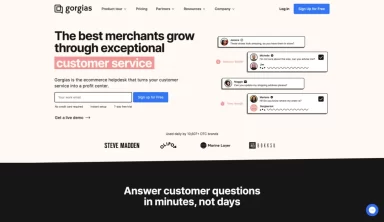The Mom Test is a business design book that teaches you to do customer research or how to talk to your customers before you get into product development. It is important to understand if your business/product/service idea is viable or not – by assessing the opinions of your potential customers, and not believing everything they say just to make you feel good.
When you start a business everyone will tell you spend considerable time on researching your target audience. But the mom test will tell you how to do this properly.
Let’s say you’ve got a business idea. How can you tell if it’s worth exploring before you spend a lot of time and effort? You may ask the opinion of your friends and family. Two things can happen here, if they want to be supportive, they will say it’s great without thinking it through. On the other hand, if they don’t want to encourage you, they will say it’s all rubbish. Both are not good for you.
The book is about being cautious of jumping too quickly to building the product. It talks about the importance of talking to customers before going all out. It costs almost nothing, yes it takes time. It costs nothing to explore an idea. If you are developing a brand, the way you talk to customers has a big impact on your brand. If you are designing and developing a website for your brand also, its talk to customers to understand their motivations and desires.
Chapter One – The Mom Test
The Mom Test is a set of simple rules for crafting good questions which you are validating your business idea, that even your mom can’t lie to you about.
How to talk to customers – its a pretty useful skill.
How to test your business idea without falling into the trap of customer bias?
When you are talking to a potential customer
- Talk about their life instead of your idea
- Ask about specifics in the past instead of generics or opinions about the future
- Talk less and listen more
Rule of thumb: Customer conversations are bad by default. It’s your job to fix them.
You are not allowed to tell about the solution or the problem. Your conversations should be about their lives – if they tell you the problem – take the conversation forward. It is also true that the customer always doesn’t know the solution.
There is a famous quote (somewhat dubiously) attributed to Henry Ford: “If I had asked people what they wanted, they would have said faster horses.”
Chapter Two – Avoiding Bad Data
The book says there are three types of bad data
- Compliments
- Fluff (generics, hypotheticals, and the future)
- Ideas
If you try really hard, you may be biased. If it’s your business idea, your child, you want it to succeed.
You want facts and commitments, not compliments and feature requests.
If you take any app – there are going to be numerous feature requests. But every company has a limited amount of money and resources. Hence prioritization is very important. Nobody can build it all at once. A customer’s willingness to pay for a particular feature tells how serious someone is about a feature request.
The real motivation behind any request is the key.
Rule of thumb: Anyone will say your idea is great if you are annoying enough about it. Also if you have mentioned your idea, people will try to protect your feelings. The more you are talking, the worse you are doing.
Your job is to listen, see what is really going on, and understand the underlying motivations.
Customer’s behavior never lives, their words do.
Chapter Three – Asking Important Questions
Every time you talk to someone, you should be asking a question that has the potential to completely destroy your currently imagined business. And you should be completely alright with this kind of response.
Rule of thumb: You should be terrified of at least one question you are asking in every conversation.
You need reliable strong information on which you should be building a product. You can’t build a business on a lukewarm response.
Most people have many problems that they don’t care enough about fixing. But they might talk about it if you ask. But without solid evidence, if you build a product to fix, you will not find any paying customers. It would be best if you saw the bigger picture in context before zooming into the problem and solutions. While talking to customers, empathize with their needs
Product Risk – Can I build it? Can I grow it? Will they keep using it?
Market Risk – Do they want it? Will they pay? Are there enough of them?
Chapter Four – Keeping it casual
We know that zooming prematurely and introducing your idea early creates biases.
Three separate meetings to avoid this trap is a solution.
- About customer and their problem
- About solution
- To sell a product
This chapter explains how the customer meetings should be planned and conducted – how to talk to customers for customer research. Researching your customers’ thoughts should always be two-way, with you on the other end, prodding them to share more details.
Chapter Five – Commitment and Advancement
In sales, there should be progress.
When you ask a customer to make a commitment and if the customer is not ready, it’s a dead end.
There is a significant difference between, “Yeah that is a problem” and “THAT IS THE WORST PART OF MY LIFE AND I WILL PAY YOU RIGHT NOW TO FIX IT”
Commitment can be cash but doesn’t have to be. Think of it in terms of currency – what are they giving up for you? A compliment costs them nothing. Major currencies are time, reputation risk, and cash. Time also you need to be careful, some people just don’t value time, so they will give you many meetings.
Chapter Six – Finding Conversations
Rule of thumb: Keep having conversations until you stop hearing new stuff.
If you are running a focus group – people lie because they want to look smart. Listen to what they are saying, also look for emotions.
If you genuinely listen to what they need or desire and resist the temptation to break in with information about your product, you will likely win them over.
Chapter Seven – Choosing your customers
A lot of people go behind big revenues, but it’s better to start based on who seems most:
- Profitable
- Easy to reach
- Rewarding for us to build a business around
Getting funded is not a validation of your idea. No matter who funds you only the market decides if the idea is good or not. No one in a room actually knows if this is exactly the right idea- go out there, talk to users, run experiments and get to “something that people want”.
Chapter Eight – Running the process
Even if you do all of this right, if the data collection process is not done right, you can end up getting bad results. It is very easy to misinterpret what customers said, especially when you are hoping the customer will agree with your hypothesis.
Avoiding bottlenecks has three parts: prepping, reviewing, and taking notes. The book gives an extensive process you can follow for taking notes.
If you already know what you want to know, it will make the entire process easy. The point is to make your business move faster, not slower. The book also warns not to spend a lot of time on this theorizing.
Show evidence before asking money from investors, prototype, and see how things are actually going. Test everything you can. Talking to customers is not everything, you can still fail, but you are still going with a lot of information.
Key Insights
Want Your Startup to Succeed? Talk to Customers FIRST.
- Talk about their life instead of your idea
- Watch out for Compliments
- Be prepared to ask the hard questions
The whole point is to understand how and why people make the decisions they do. The right mindset for customer conversations is very important. Better information acquisition leads to better decisions. Talking to customers will reveal priceless insights.
Additional Reading
10 Effective Ways to Connect With Your Customers – businessnewsdaily.com
https://blog.hubspot.com/marketing/10-ways-to-speak-to-customers-who-dont-know-they-need-you
10 Ways to Make Customers Fall in Love with Your Business
13 Tricks for Landing Your First Thousand Customers


